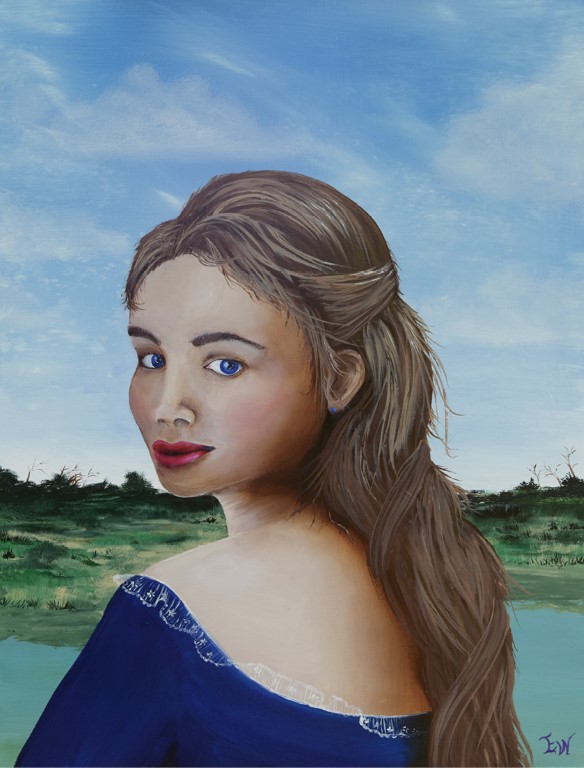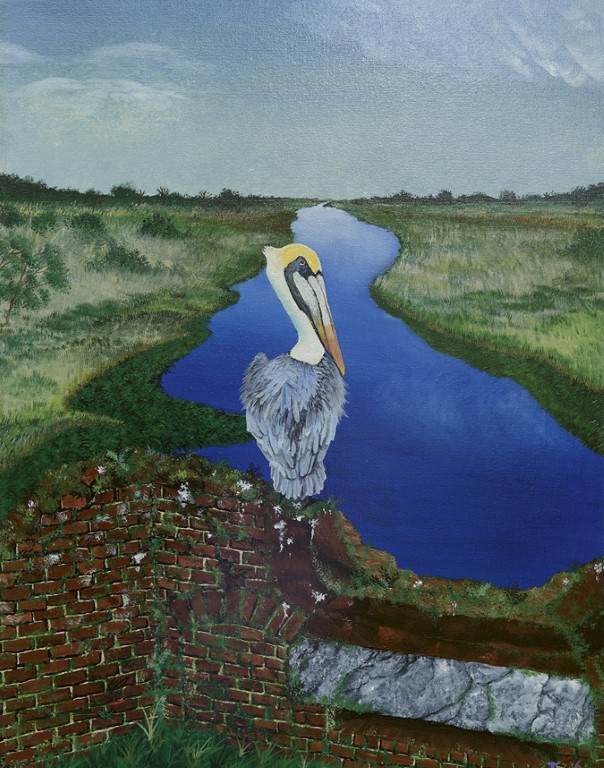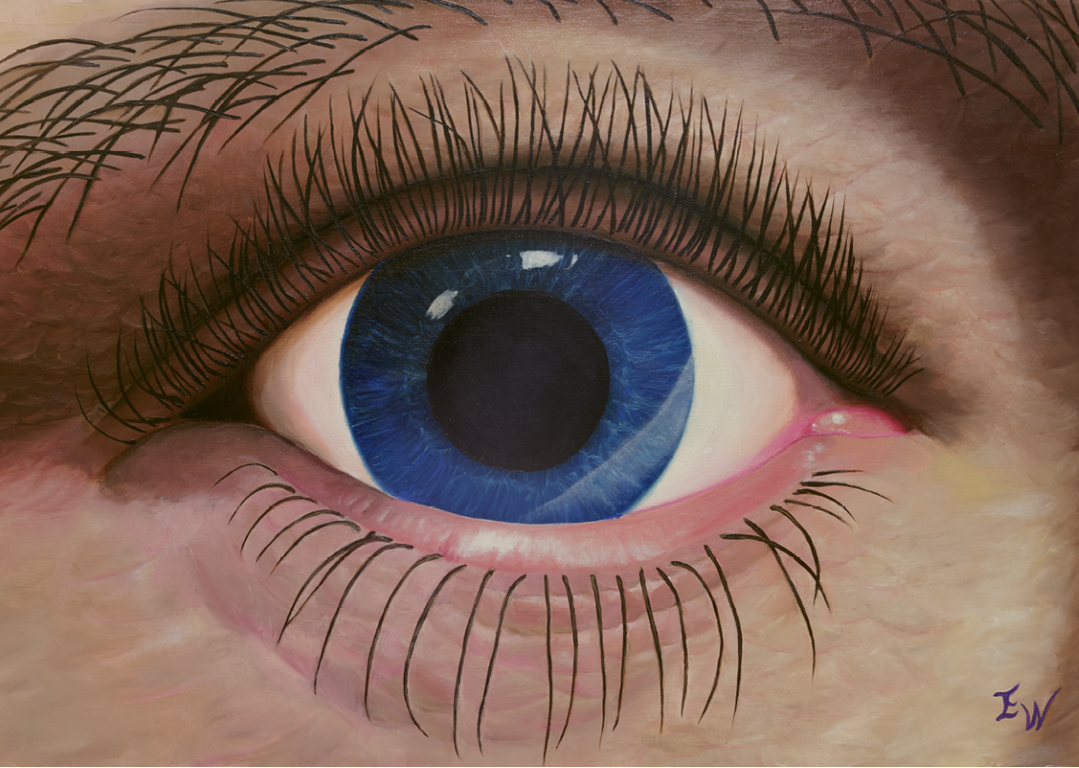
Artist Emily Whiting chokes up when she talks about Jasper Francis Cropsey’s painting The Spirit of War. Painted in the late 1800s, it’s a detailed, moody work depicting war’s fear and hopelessness. That she saw it more than three decades ago doesn’t matter; Whiting is so moved by allegorical art—works in which details and symbolism reveal hidden meanings—that she’s bent her life around it.
When Whiting was 15, her parents bought her an easel, and she started teaching herself to paint. Then, on a family trip to England and Wales, she discovered a love for ruined castles, a theme that runs through her work today. As she continued her autodidactic art education, she fell in love with the symbology of the old masters. For example, oysters might mean love, dogs suggest faithfulness and burning candles symbolize time.
Discouraged by her parents from pursuing art as a career, Whiting studied architectural design at Clemson but never entered the field. “I realized halfway through I couldn’t be an architect because nobody was going to want me to design castles,” she says.

The more she learned about art, the more she recognized a growing inner frustration that modern and contemporary art was overtaking the art world’s attention while the allegorical paintings of the Victorians were falling out of favor. “I was in the National Gallery of Art in Washington, D.C., when I noticed there were benches in front of the old masters,” she says. “But in the modern art wings, there are no benches because people just walk through. There’s nothing for them to engage with. People get touchy when I say I don’t like modern art, but it just doesn’t speak to me. It’s like a conversation where I have to do all the talking.”
An artist at loose ends, Whiting took a job at the Salvador Dalí Museum in Florida, where she had an epiphany about her art ennui. “Dalí was unique because he put so much meaning and imagery into his work,” she says. “It reinforced there could be so much more, but I felt left out of the art world because I couldn’t find anyone who thought like me.” Though she continued to dabble in art, Whiting married, had two children and started a homestead with her family. She also became a caretaker to her mother, and as she puts it, “life happened.”

However, when her children were grown, and her mother passed, Whiting had the time and freedom to reignite her passion for painting. “I have no more distractions,” she says. When she’s not taking care of her homestead in Adams Run, South Carolina, which includes gardens, fruit trees, bees, goats, chickens and turkeys, she’s painting. And she’s driven. “I’m trying to pursue something before it’s lost to time,” she says. “Art isn’t just about pretty pictures; it’s meant to be communication. It used to be there were all these symbols that communicate what the artist was trying to say.”
Whiting intentionally works slowly; she only finishes a couple of paintings a month and may have up to two dozen going at a time. She’ll paint a stage, starting with the furthest background, set it aside to dry for a week to cure, then move on to another work in progress, working forward to build the layers until she reaches the smallest details. She doesn’t work with sketches—everything is in her mind. She’s still inspired by architecture, especially crumbling ruins. “The vegetation shows the passage of time, and it makes me wonder, ‘What happened here? What did I miss?’” she says. One of her recent paintings, The Eye, is a large rendering of the artist’s eye staring at the viewer. “It’s meant to make people uncomfortable. It’s direct communication,” Whiting explains.

In another, Beauty in Life and Death, she’s captured a scene from Botany Bay. “I saw this really interesting dead tree on the beach,” she says. “It was all twisted and gnarly, and I thought, ‘This is probably more interesting in death than in life.’ Now it’s moving; it’s writhing. I wanted to show contrast, so I painted a small white egret. Death is looming over the scene, but here is life small and subtle.”
The artist’s work is available through her website and the Stono Gallery in Charleston, and commissions are available.
Robin Howard is a freelance writer in Charleston.
See more of her work at robinhowardwrites.com.

